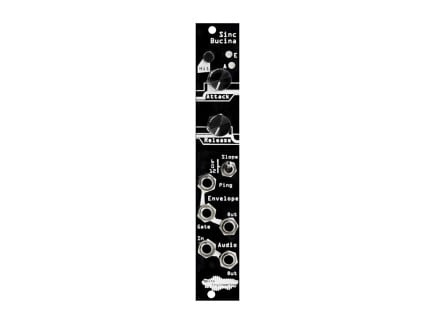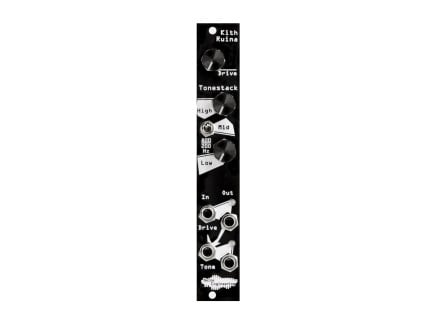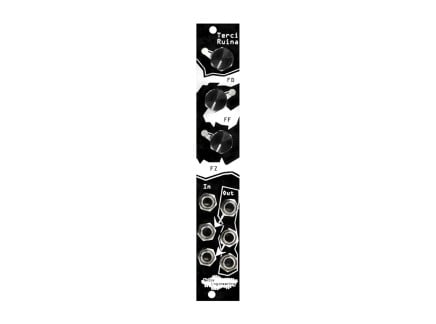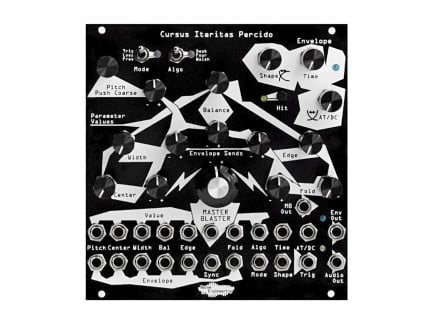We had the good fortune to once again host a hangout/product demo with one of our favorite local synth crews, Noise Engineering. Always ready to geek out about the noisier side of sound design, Kris, Stephen, and Markus consistently bring a fun blend of gnarly sounds and nerd talk—one of my personal favorite combinations.
Noise Engineering's rate of product development is nearly blistering—new designs seem to emerge frequently and steadily into public visibility. What's truly incredible about this, though, is that each design still feels inspired and unique, a feat not easy to accomplish in a landscape as busy and bustling as Eurorack.
NE came with a no-nonsense presentation about some of their newest products: the Terci Ruina, Kith Ruina, Sinc Bucina, and the formidable Cursus Iteritas Percido.
Distortion of the Month
At the beginning of the year, Noise Engineering announced a plan to release a new distortion module every month—an ambitious task that maybe only they could pull off. So far, the Distortion of the Month Club has provided us two unruly tools for sonic devastation: the Terci Ruina and Kith Ruina.
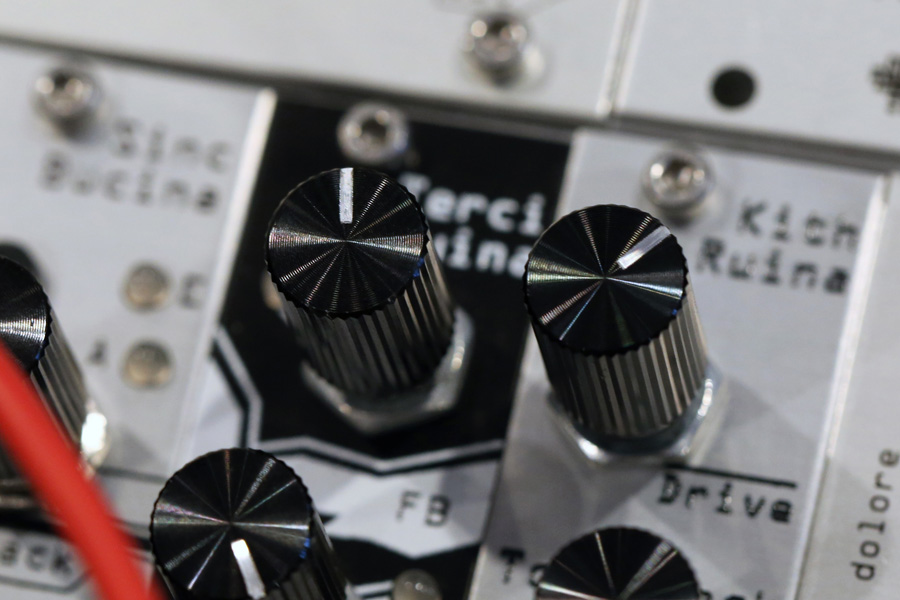 Detail of the Terci and Kith Ruina, cozily settled side by side.
Detail of the Terci and Kith Ruina, cozily settled side by side.
Terci Ruina is a triple distortion, providing countless ways to alter sound. Each distortion is different, and each features its own input and output, allowing for everything from simple saturation to complex, cascaded shaping effects. Offering a Feedback, Feedforward, and Fuzz design each with a single tone control, Terci Ruina provides a straightforward means of creating an enormous array of effects. In NE's own words, this is not the module to go to if you want pretty, warm distortions: but it'll tear things up in an instant, if you desire.
The recently-released Kith Ruina takes a different approach. It borrows inspiration from guitar tone stacks, intentionally leveraging this classic topology to create an unabashedly mean variety of distortion options. Featuring an independent drive and three-band EQ, Kith can do everything from subtle drive to crushing bass and screeching highs. The drive section is normalized to the EQ's input, making the classic distortion-into-filtering scheme immediately accessible. However, like in the Terci before it, each section can be used completely independently—allowing the creation of more novel effects, insertion of other processors, and more. We eagerly await the distortion modules to come...
Sinc Bucina
The Sinc Bucina is another all-analog module: a combo lowpass gate/envelope perfect for taming harsh tones and creating classic LPG plucks and plonks. The Sinc Bucina may not contain any vactrols, but it'll still bongo to your heart's content: just add to any sound source and you've got an entire synth voice on your hands.
Sinc Bucina doesn't offer a direct control for cutoff: the openness of the LPG is always controlled via the internal envelope or ping controls. The integrated envelope offers attack and release time controls for creating specific shapes, while the ping input induces the classic all-decay "plucked" LPG response (if you don't know this sound, check out Until Spring by Morton Subotnick...it's everywhere). Sinc Bucina can switch its filter response from 0dB/Oct (VCA-like response) to 6 and 12dB, making a variety of filtering effects possible from subtle to more dramatic. Oh, and the envelope itself has a direct output—making it easily possible to use as an ASR envelope for any application, whether or not the LPG itself is in use.
Sinc Bucina makes an excellent pairing with complex oscillators and other traditional sound sources—but it truly comes to life with extreme, abrasive timbres. The filter's strengths become far more apparent when they have a lot to bite into, providing a clearer picture of what makes the Sinc Bucina so special.
Master Blasting with CIP
And finally, the largest Noise Engineering module to date: the Cursus Iteritas Percido. An adaptation of the Cursus Iteritas, the CIP is a full synth voice complete with complex internal modulation routing and a MASTER BLASTER control (geez that sounds so cool).
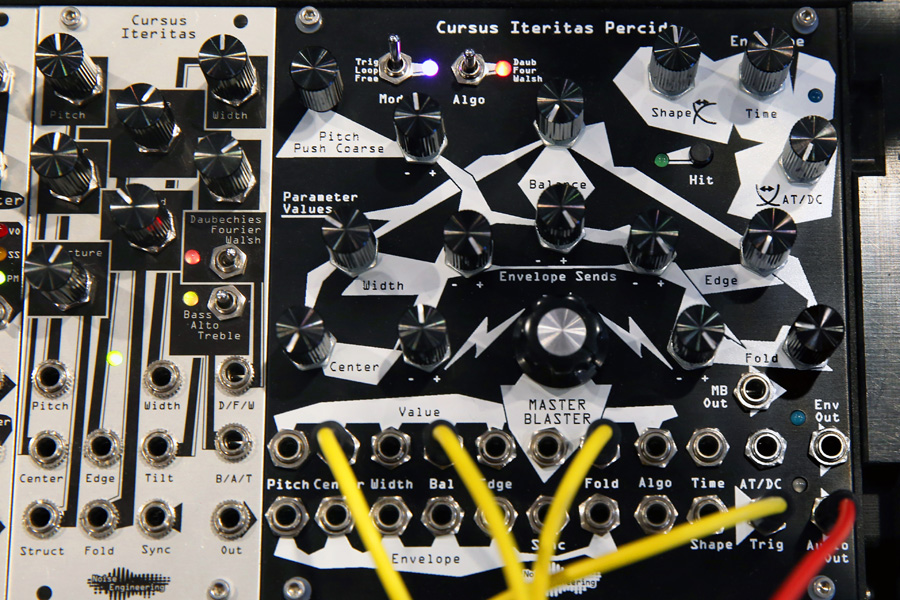 Cursus Iteritas Percido and its predecessor coexisting harmoniously (or maybe inharmoniously?)
Cursus Iteritas Percido and its predecessor coexisting harmoniously (or maybe inharmoniously?)
CIP, like its older sibling CI, produces wavetable-like effects by employing uncommon synthesis methods to generate complex waveshapes in real time—timbres ranging from smooth to destructively abrasive. Wavelets and Walsh transforms abound!
The key difference with the Cursus Iteritas Percido is its integrated modulation routing. It includes an envelope generator with dedicated send level attenuverters for every synthesis parameter, enabling independent level control for the modulation to literally everything. This is the same type of modulation routing that made the Loquelic Iteritas Percido so distinct from the original Loquelic, but the CIP adds a further level of control: the MASTER BLASTER.
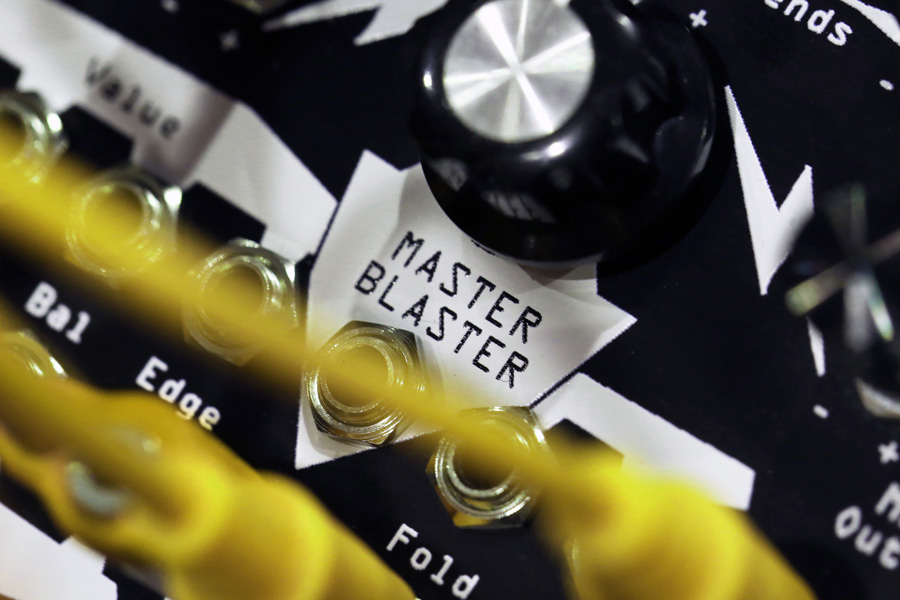
The MASTER BLASTER can be thought of as an attenuator for the envelope signal prior to the send attenuverters for each parameter. Essentially, it is a master envelope level attenuator that enables one-knob control of the global modulation state, complete with CV control (and even a dedicated MB offset output for synchronizing changes to other modules). A simple idea that provides intuitive and flexible performance control, MASTER BLASTER is kind of genius.
And like all NE sound sources, the CIP offers voltage control of everything...a black hole for control voltages and gates that just gets cooler and cooler the more modulation you throw at it. Just add some gates and random voltages and you're set.
Like everything from Noise Engineering, these new modules are just rad. It doesn't seem to matter if they're making simple voltage processors, gnarly distortions, or full synth voices—everything they produce is well-considered, unique, and inspirational. As always, we're looking forward to seeing what they do next...but until then, we'll be MASTER BLASTING and ruining timbres everywhere.

